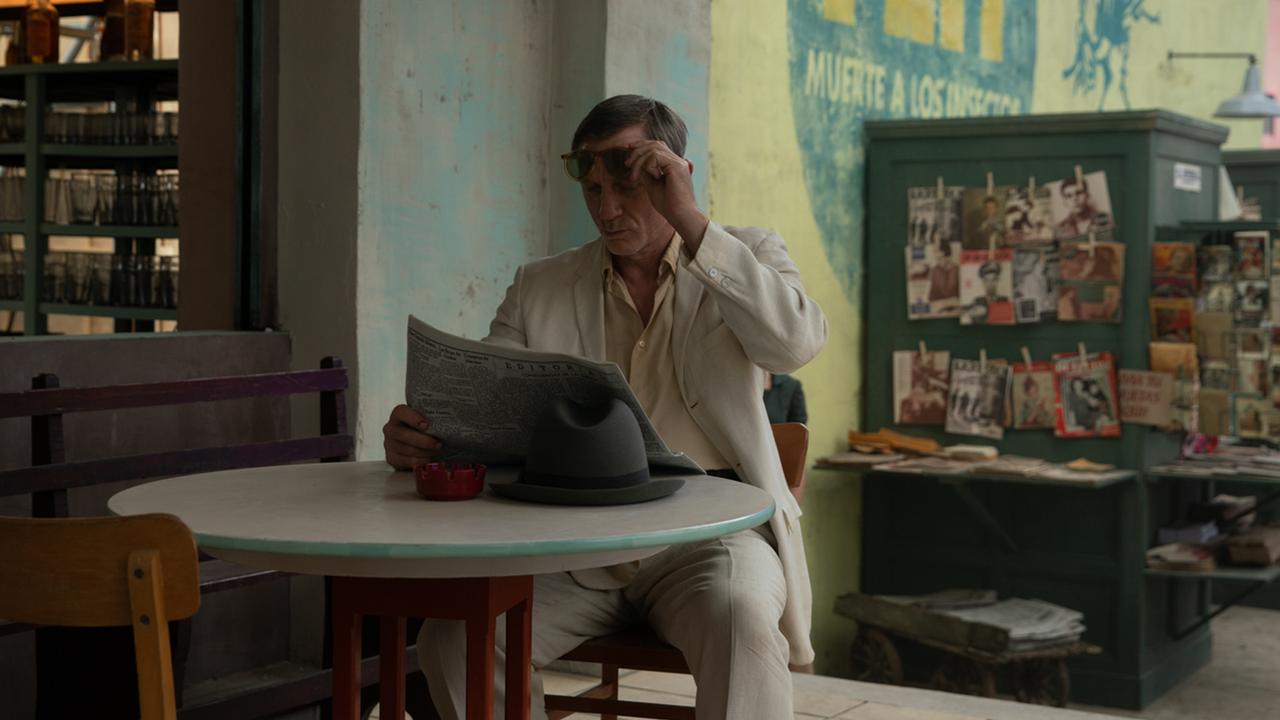On the money
WE take coins for granted today; they have been demoted to the status of change: what is left when you break a note.
WE take coins for granted today. Since the advent of paper currency and the abandonment of a monetary system based on intrinsic value, they have been demoted to the status of change: what is left when you break a note.
We keep being told that they will one day be obsolete altogether, as will paper -- or plastic -- notes, and money will at last have achieved the pure status of a mathematical formulation, a system of electronic credits and debits.
At the same time, we hardly pay attention to the images coins bear, even though the mint keeps producing various, rather uninspired designs to commemorate international years of this or that. The cacophony of signs in the modern media environment is overwhelming, but it is a sobering thought that if the world we know fell apart and all that noise fell silent, our coins would be among the most durable of our artefacts, and future civilisations, digging them out of the rubble, would scrutinise them for what they revealed about their distant ancestors.
This is exactly the way we have looked at ancient coins for the past five or more centuries. There are thousands of different ones, each designed to bear meaning as well as value, tiny but rich sources of documentary evidence about events and cultural attitudes, and many also produced with exquisite craftsmanship. The survey of ancient coinage at the Ian Potter Museum of Art at Melbourne University is an excellent opportunity to become acquainted with a wide range of types, selected and thoughtfully exhibited to make the variety intelligible. There are even magnifying glasses over some of the prize pieces.
Coins in Europe date from the Archaic period, and seem to have originated in Lydia, in the west of Anatolia; the last of the Lydian kings was the proverbially wealthy Croesus. The Greeks, however, were the first to realise the full potential of the new invention.
As a seafaring and trading civilisation, highly decentralised and composed of dozens of independent city-states, they could benefit enormously from a system that provided a common denominator for economic value.
Before money, trade was based on barter, the direct exchange of commodities. Such exchange required the physical presence of both commodities at the time and place of the exchange. With money as the unit of value, the things being bought and sold could be ascribed a price and exchanged for cash instead of other products. Currency was far more portable and not subject to spoilage; for the same reasons, it could be accumulated and hoarded -- although, of course, it was also far easier to steal and carry off, so that the benefit to trade and capital formation was also an incentive to crime.
Although coins were a symbolic system of value, they were generally based on the intrinsic value of the metal, especially silver ("argurion" meant money in Greek, just as "argent" does in French) and later gold as well. This meant that the discovery of silver mines on Athenian territory actually increased the quantity of money that could be produced; much later, Spanish conquests in the New World brought so much gold and silver into the economy that they provoked serious inflation.
One advantage of intrinsic value was that coins could be weighed to determine what they were worth, so that the only thing an issuing state had to guarantee was the purity of the metal. This was more of a problem with gold coinage, and Archimedes's famous cry "Eureka" -- meaning "I have found [it]" in Greek -- when he got into his bath and it overflowed, was his discovery of the solution: different metals have different weight-volume ratios, and by measuring displacement, you could establish whether gold was alloyed with silver.
The Spartans were probably the first to develop a completely symbolic currency, made of iron, because they wanted to discourage the hoarding of wealth in their semi-communistic society; as in the old Iron Curtain nations, in fact, they had a non-exchangeable legal tender that was valid only within their territory.
All ancient coins were made by hand, using engraved metal dies. The lower of these, representing the obverse face (what we now call the head), was set in the anvil; the reverse die (the tail) was in the punch. A blank piece of silver of the requisite weight, now called the flan, was set between the anvil and the punch, and then struck with a hammer. This explains the characteristic form of Greek coins, with extruded metal on the edges making an uneven rim.
The physical stress of this production process meant that dies often cracked and new ones had to be engraved, and this explains the endless variety encountered in the same designs. The work had to be done repeatedly, by many different artisans. One of the distinctive features of coins, in fact, is that they are the work of anonymous craftsmen, and yet they are such intimate reflections of the character of their cities of origin.
It was the Greeks who realised that coins could have a double function, as unit of value and as a symbol of the identity of the city that issued them. The Greek view of life was deeply imbued with the spirit of competition, and coins, which circulated around the trading world, were a way of advertising the qualities of each particular polis. An early example is the silver drachma with the head of Aphrodite from Leucas, a colony of Corinth from 470BC to 450BC (that is, the generation that followed the Greek victory over the Persians). The design is still marked by archaic stiffness, but the elaborately plaited hair and collar are suitable attributes for the goddess of love. Deep ridges at the edges give a vivid sense of the powerful blow that impressed the silver with this image.
The reverse of this coin, as in the other Corinthian pieces displayed, has a beautiful figure of Pegasus, the winged horse. The craftsmanship of both sides inevitably makes one wonder about the relation between the carvers of coin dies and the carvers of large-scale sculpture at the time. There is a parallel between the forms of archaic sculpture and those of the head of the goddess, and this connection seems to become more pronounced in some later coins, like the exquisite and tiny obol from Megalopolis in Arcadia dating from more than a century later, about 340BC.
The obverse has a head of Pan, the ancient god of Arcadia, represented as a beardless youth; the care with which the tousled hair has been rendered is remarkable, and even on this very small scale the features are defined with great confidence, in what feels like a vernacularised version of the high sculpture of the mid-fourth century.
Interestingly, the Athenian currency -- from the home of the greatest sculptors of the classical period -- seems to be completely disconnected from the high sculptural tradition. The beautiful but archaically stylised features of the city's patron goddess, Athena (with her owl on the reverse), seems to be repeated all through the great period of the building of the Parthenon, whose sculptures transformed the representation of the human body. Even in the silver tetradrachm from the exhibition dated to the middle of the fourth century BC, the already ancient design is only superficially and rather incongruously updated in the more contemporary handling of eyes, nose and lips.
Perhaps Athens was such a big city that the different arts and crafts could evolve separate traditions in a way that would be impossible in a smaller centre. Or perhaps there was a different reason for this uncharacteristic stylistic conservatism: the Athenian currency had grown increasingly to be the international standard and, like the US dollar today, an unchanging design implied constancy and integrity.
In any case, it is noteworthy that many of the colonies in southern Italy and Sicily have much more inventive and elaborate designs than Athens -- including, here, beautiful examples from Metapontum, Syracuse and Tarentum, as well as a silver stater from Neapolis (Naples) with the head of the Siren Parthenope, after whom the original city was named, and on the reverse her father, the river-god Achelous, represented as a bull with a human head.
Interestingly enough, the Athenian design does appear radically changed in a much later silver tetradrachm from about 184BC. Here, the face of Athena is rendered with a kind of literal realism typical of the Hellenistic period, and the lack of a fundamental sense of design -- that is, of the ability to turn the head into a coherently artificial form -- is compensated by a wealth of superficial ornamentation in the headdress and hair.
The obverse of coins had, as we can see, long been occupied by the head of a divinity, so it was a relatively small step for Hellenistic coins to replace that head with the portrait of the reigning monarch, a tradition that has continued to the present day, except in republics, which may have either symbolic heads -- going back to the older tradition of divinities -- or the features of a distinguished past head of state.
Roman coins are particularly interesting in this respect, and the Renaissance was deeply impressed by the fact that the features of so many of the great Romans had survived and were as recognisable to us as our friends, while the art of portraiture had been completely lost for more than a millennium following the fall of the empire. The earliest Roman coins in the exhibition are rude pieces of bronze, and the first coin with a head is from the third century BC, entirely Hellenistic in design, with Heracles on the obverse but the Roman motif of Romulus and Remus with the she-wolf on the reverse.
Later we find the succession of Romans still familiar to most people today -- from the period covered by Shakespeare's Julius Caesar and Antony and Cleopatra, and more recently the popular Rome television series. There is Caesar, poignantly represented crowned with the laurels of victory in 44BC, the year of his assassination, and Pompey the Great in a double Janus-head; and then a succession of coins minted by Caesar's assassins as well as his partisans during the wars that ensued; and then coins issued by his avengers, Mark Antony and Octavian, as they fell out and fought again.
One of Caesar's coins has the goddess Venus instead of his portrait, with her son Aeneas, the founder of Rome, on the reverse; the reason for this is not modesty but the ancient tradition that the Julii are descended from the Trojan hero's son.
As Caesar, now dictator, prepares to reshape the institutions of government, his coin serves to remind the people of the legitimacy of his claim to power as a second Aeneas, authorised and destined to renew the city of Rome.



